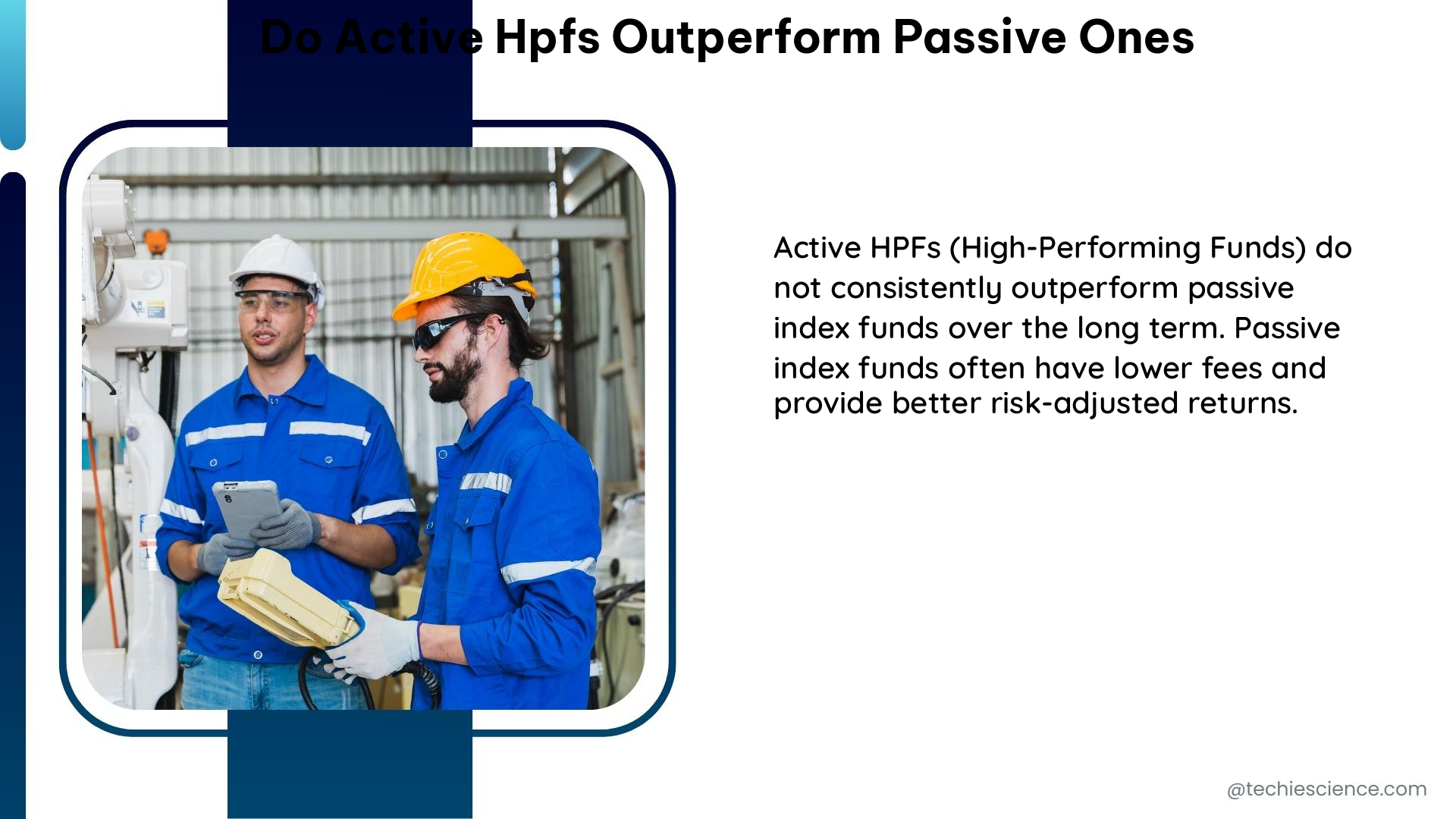Active high-performance funds (HPFs) do not consistently outperform passive funds, according to various studies. The performance of active funds varies widely across asset classes and categories, and costs play a significant role in the performance of both passive and active strategies.
Understanding Active and Passive Funds
Active funds are managed by professional fund managers who actively research, select, and monitor the securities in the fund’s portfolio, with the goal of outperforming the market or a specific benchmark. Passive funds, on the other hand, are designed to track the performance of a specific market index, such as the S&P 500, by holding the same securities in the same proportions as the index.
Comparing the Performance of Active and Passive Funds

Morningstar Study
According to a study by Morningstar, only 43% of active funds survived and outperformed their average passive peer in 2022. The same study also found that the cheapest funds succeeded more than twice as often as the priciest ones (36% success rate versus 16%) over the 10-year period through 2022, indicating that costs play a significant role in the performance of both passive and active strategies.
Asset Class and Category Performance
The performance of active funds varies widely across asset classes and categories. For example, in 2022, U.S. stock-pickers handled volatility better than foreign-stock funds, but overall active funds had less than a coin flip’s chance of surviving and outperforming their average passive peer.
Hartford Funds Study
The Hartford Funds study supports the idea that there is no clear winner in the active vs. passive debate. The study found that just when it seems that active or passive has permanently pulled ahead, markets change, performance trends reverse, and the futility inherent in declaring a “winner” in active vs. passive is revealed anew.
Factors Influencing the Performance of Active and Passive Funds
Costs
Costs play a significant role in the performance of both passive and active strategies. The Morningstar study found that the cheapest funds succeeded more than twice as often as the priciest ones, indicating that lower costs can give passive funds an advantage over active funds.
Market Conditions
Market conditions can also have a significant impact on the performance of active and passive funds. During periods of market volatility or uncertainty, active managers may be able to navigate the market better than passive funds, but this advantage may not be consistent across all market conditions.
Fund Manager Skill
The skill and expertise of the fund manager can also play a role in the performance of active funds. Skilled active managers may be able to identify undervalued securities and generate alpha, but this is not a guarantee, and the performance of active funds can vary widely based on the manager’s ability.
Conclusion
While some active funds may outperform passive funds in certain market conditions, there is no consistent evidence that active HPFs outperform passive funds. Costs and market conditions play a significant role in the performance of both passive and active strategies, and the performance of active funds can vary widely across asset classes and categories.
Reference:
– Morningstar Study on Active Funds Underperformance
– Hartford Funds Study on Active vs. Passive Investing
– Morgan Stanley Article on Active vs. Passive Investing

The lambdageeks.com Core SME Team is a group of experienced subject matter experts from diverse scientific and technical fields including Physics, Chemistry, Technology,Electronics & Electrical Engineering, Automotive, Mechanical Engineering. Our team collaborates to create high-quality, well-researched articles on a wide range of science and technology topics for the lambdageeks.com website.
All Our Senior SME are having more than 7 Years of experience in the respective fields . They are either Working Industry Professionals or assocaited With different Universities. Refer Our Authors Page to get to know About our Core SMEs.